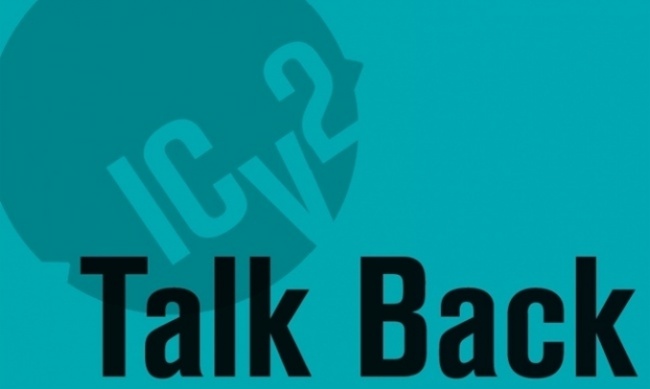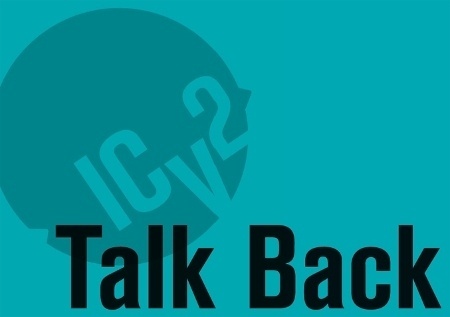Michael Breakfield of Lone Star Comics in Arlington, Texas, comments on Marvel Comics recent plans to return to Legacy numbering (see "Marvels to Return to 'Legacy' Numbering" and "'Legacy' #1 Will Lead into 53 Marvel Series.").
In the wake of their Secret Empire event, Marvel Comics is launching a new initiative called Marvel Generations. This series of 1-shots will bring together the classic versions of superheroes with their modern-day counterparts. Bruce Banner and Amadeus Cho, Miles Morales and Peter Parker, Logan and X-23, and more will embark on breath-taking adventures that will set up the next stage of Marvel’s evolution – Marvel Legacy.
What is Marvel Legacy, you ask? Marvel Legacy is a return to the original numbering. In 1996, Marvel comics started a trend that would continue up until 2016. From 1961 all the way until 1996, Marvel Comics’ flagship titles ran sequentially uninterrupted, but then Heroes Reborn happened. Their flagship titles abruptly ended with Fantastic Four #416, Iron Man #332, Avengers #402, and Captain America #454. They were relaunched with brand new #1s.
This was done for several reasons. It cannot even be argued, the 1990s was the decade of the X-Men. Marvel’s Merry Mutants could do no wrong and probably singlehandedly kept the lights on at the House of Ideas which was floundering and even declared bankruptcy at one point. Their flagship titles were not selling well and Marvel Comics was on the verge of disaster. So, they hired Jim Lee and Rob Liefeld, the renegade artists who as part of a team of rock star artists only a few years earlier left Marvel and started up Image Comics, to come in and take the reins of their flagship titles. So, Fantastic Four and Iron Man, under Lee, and Captain America and the Avengers, under Liefeld, were given modernized origins and brand new #1 issues. Now, this was interesting because Captain America had never had a #1 issue before in the Marvel Age of Comics (I’m not counting Captain America Comics #1 from the Golden Age for this venture, though perhaps Marvel should have). His Marvel Age adventures began in Avengers #4, continued in Tales of Suspense #58, and his own solo series launched with Captain America #100. (NOTE: These are details that I will bring up again in a moment, and with good reason.)
Love it or hate it, the Heroes Reborn experiment set up a triumphant moment in Marvel History – Heroes Return! This saw the Avengers, Fantastic Four, Captain America, Iron Man, and even Thor relaunched with brand new #1s, as did Hulk and Spider-Man a few years later, signifying the start of a brand-new era in Marvel Comics. (NOTE: This was also the very first time in history that Thor had a #1 issue. His adventures began in Journey into Mystery #83.)
For the first time since the 70s Marvel’s flagship titles, titles that were not X-Men or Spider-Man, were actually filling out the monthly Top 10s in sales on a regular basis. Avengers and Fantastic Four were once again headliners and this is a trend that would carry on to this very day and even lead to the domination that is the Marvel Cinematic Universe.
Now, the Odinson is all about tradition, but these initial relaunches did not bother me so much. Still fresh in my memory at this time was what DC Comics accomplished in the wake of Crisis on Infinite Earths by relaunching many of their flagship titles with brand new #1s and reinvigorating their universe. So, I was in a wait and see kind of mode and Marvel did not let me down. Assembling some of the best creative teams ever to handle the titles, these titles that I had loved my whole life were in very good hands. To this day, I’ll put Kurt Busiek and George Perez’s Avengers run and Mark Waid, Ron Garney, and Andy Kubert’s Captain America run against any that have come since and crown them king.
And that’s saying a lot because years later Ed Brubaker’s run on Captain America was stellar, but it brought along with it a trend that would haunt the Sentinel of Liberty and Marvel Comics in general for many years to come. In the 21st Century, Marvel and DC Comics have become addicted to the relaunch, the reboot, the restart, the start over, whatever you want to call it, it almost always coincides with a brand new #1.
To date, the Fantastic Four has had 6 #1s, the Avengers 6 #1s, Iron Man 8 #1s, Thor 6 #1s, Captain America 10 #1s, Wolverine 6 #1s, Deadpool 5 #1s, and the Punisher has had a whopping 11 #1s, and none of this includes FF #1, Dark Avengers #1, Infamous Iron Man #1, Steve Roger: Super Soldier #1, Old Man Logan #1, All-New Wolverine #1, Cable and Deadpool #1, nor does it include any of the Punisher War Journal’s 2 #1s or New Avengers’ 4 #1s.
Back in the day, all a floundering title needed was a talented fresh new voice like Chris Claremont, Frank Miller, or Jim Starlin to give it a shot of adrenaline in the arm. From 1996 to 2016 it seems the answer was to wash the slate clean and start over with a brand new #1 issue. For many year, there were only two titles that were seemingly bullet proof to this kind of nonsense – Action Comics and Detective Comics. The two titles that launched it all back in the Golden Age were rolling along, unblemished by a restart, and coming up fast on that magical milestone, issue #1000. But alas, those in charge couldn’t even leave that one alone as both Action Comics and Detective Comics were relaunched with new #1s in The New 52, proving nothing is sacred anymore in the business of comics.
Well, in the wake of DC Universe Rebirth, Action Comics and Detective Comics have both returned to their Legacy Numbering. And now, Marvel is returning to its Legacy Numbering, too.
Nobody is happier to hear that Marvel is returning to its Legacy Numbering than the Odinson. I figure if we can’t have a tight continuity then maybe at least we can a sense of history. How will this work, you ask? Basically, this fall, all the major titles at Marvel Comics will return to the original numbering as if they had not continually restarted at #1 over and over again over the last 20 years. What does this mean for the readers? It means that everything that launched in 1961 with Fantastic Four #1 to now will have a cohesive history and sequential reading order within Marvel Comics.
Marvel released charts to follow - example: The Avengers.
So, the Odinson took it upon himself to help readers and fans follow along and I started connecting the dots for everyone on our website.
Here are a few that I have finished so far:
Marvel Legacy Numbering: Cable
Marvel Legacy Numbering: Deadpool
Marvel Legacy Numbering: Hulk
Marvel Legacy Numbering: Iron Fist
Marvel Legacy Numbering: Luke Cage
As I’m setting these up, I was thinking this is great. Now, readers and fans can see what it would have been like and even read in order as if none of the series had restarted with new #1s so many times. However, as I was getting further in, I suddenly realized that there were a few glaring flaws in Marvel’s Legacy Numbering.
There is something a little wonky about this Marvel Legacy numbering. For example, they are giving Tales to Astonish #1-101 to the Hulk completely ignoring the fact that there already exist Incredible Hulk #1-6 and the fact that Hulk doesn't show up in Tales to Astonish until Tales to Astonish #59. (NOTE: When I set up Hulk’s Legacy Numbering this was a weird fact I could not ignore.)
The same thing happens with Thor. He doesn’t appear in the series until Journey into Mystery #83, yet they are assigning the entire series, #1-82, to him as well. Plus, Luke Cage gets credit for Power Man and Iron Fist but Iron Fist does not. Here's where it really goes off the rails. Tales of Suspense #1-99 are going to go to Captain America even though he doesn't show up in the series until Tales of Suspense #58. And worse, Iron Man gets no credit for Tales of Suspense even though he appears in more issues than Cap AND his first appearance is in issue Tales of Suspense #39!!!
The worse crime of them all, we all know Spider-Man’s legend begins in Amazing Fantasy #15, but AMF #15 doesn’t even make Spidey’s list. Not even as a #0?!!
Let the Odinson go on record by saying the Marvel Legacy Numbering is a great idea, but it just seems like it was rushed, not thought all the way through, and clumsily executed. I see what they are trying to do. They are trying to establish a #1, a starting point, but they are doing it at the expense of accuracy. They are doing it at the expense of Marvel History.
I would like to finish this week by addressing the reboot, relaunch, restart, whatever you want to call it, the brand new #1 issue phenomenon. The most common reason I’ve heard over the years for this phenomenon is that Marvel and DC want to give new readers a jumping on point. Please, allow the Odinson to solve this problem for everybody. Tell the hopeful fan-to-be that if they want a perfect jumping on point they should read any issue between Action Comics #1 and the Action Comics issue that came out this week. They should pick up any issue between Amazing Spider-Man #1 and the issue of Amazing Spider-Man that came out this week. Do you see where I am going with this?
There is no such thing as a magical jumping on point for comics. The very first comic book the Odinson can remember reading is Amazing Spider-Man #157. That was my jumping on point into the medium. The perfect jumping on point for potential fans isn’t an arbitrary #1. No, the perfect jumping on point for any future fan of comic books is the very first comic book that they read.
The opinions expressed in this Talk Back are solely those of the writer, and do not necessarily reflect the views of the editorial staff of ICv2.com.

'A Good Idea, But I've Discovered a Flaw'
Posted by ICv2 on August 9, 2017 @ 6:57 pm CT



